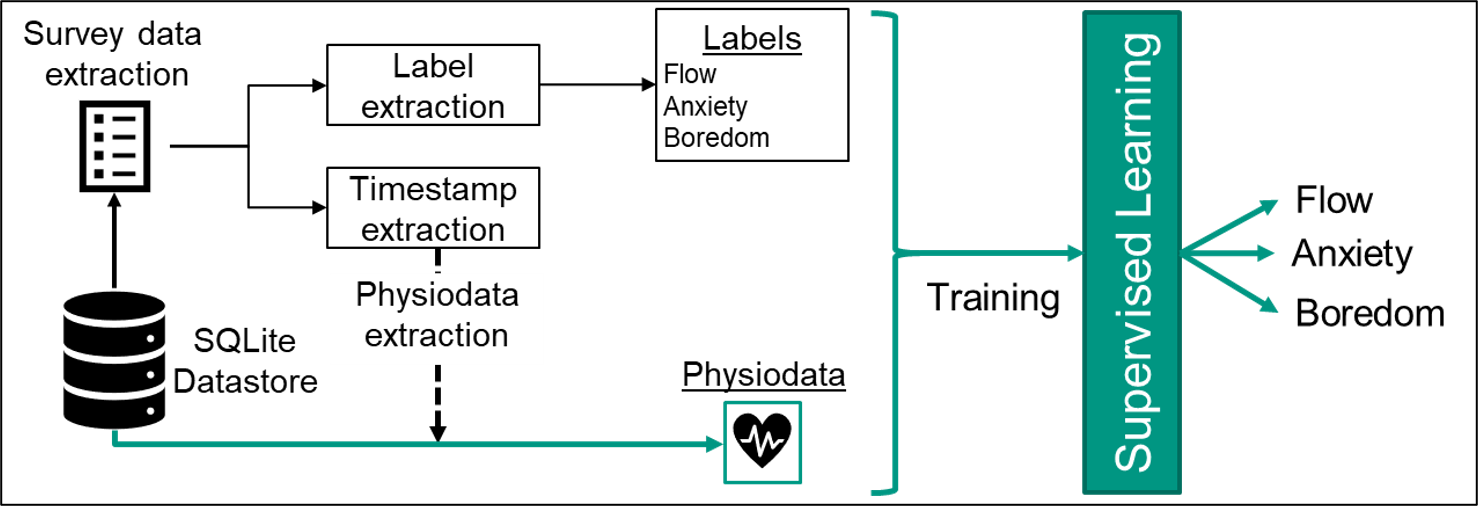Classification of Flow, Anxiety and Boredom based on Heart Rate Variability using Machine Learning
-
Flow is deemed a desirable state due to its links to improved individual performance and well-being. However, current methods are obtrusive and cannot measure flow during activity execution. This research responds to the challenge of developing an unobtrusive method to measure flow during activity execution. In this project, flow and adjacent states (anxiety and boredom) are classified via machine learning based on heart rate variability (HRV) data collected in a field study with 23 office workers. A hierarchical multi-classifier was trained that can differentiate between (1) flow and non-flow (binary; 75.6% accuracy), and among (2) flow, anxiety, and boredom (multi-class; 53.3% accuracy). The results indicate that flow and boredom are indeed recognizable by HRV features alone, whereas anxiety seems to require additional feature types for classification. Additionally, the utility of the classifier is illustrated by applying it on the complete HRV dataset to analyze office workers’ states. Hence, this article illustrates the necessity of building physio-adaptive systems and provides a foundation for their development. Such systems could, for instance, postpone notifications while individuals are in flow during office work.
 The physiological data is combined with labels for flow, anxiety and boredom which were derived from surveys. We rely on different supervised machine learning algorithms, such as Random Forest, SVM and Artificial Neural Networks.
The physiological data is combined with labels for flow, anxiety and boredom which were derived from surveys. We rely on different supervised machine learning algorithms, such as Random Forest, SVM and Artificial Neural Networks.Publications
To Be or Not to Be in Flow at Work: Physiological Classification of Flow using Machine Learning. Rissler, R.; Nadj, M.; Li, M. X.; Loewe, N.; Knierim, M. T.; Maedche, A. 2020. IEEE transactions on affective computing. doi:10.1109/TAFFC.2020.3045269

